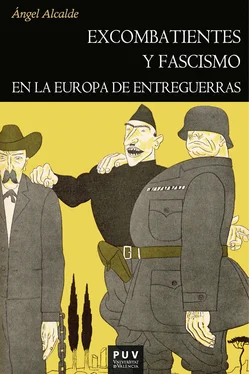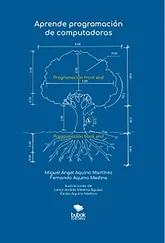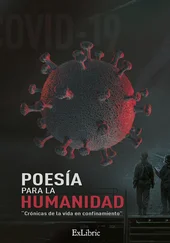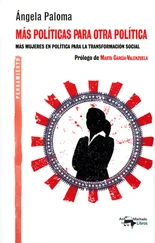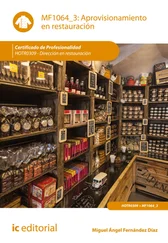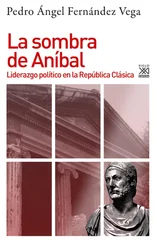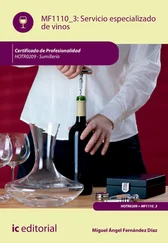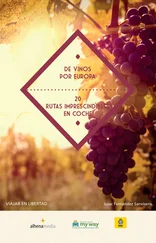13* N. del T.: En castellano, el término de uso más frecuente es excombatiente, que también se empleará en este libro como equivalente de war veteran o veteran . El empleo del término excombatiente para definir a los veteranos de guerra proviene en buena medida de la época franquista, ya que fue empleado por la dictadura para denominar a los soldados que habían combatido en la Guerra Civil española.
14 René Remond: «Les anciens combattants et la politique», Revue française de science politique , 5ème année, 2, 1955, pp. 267-290; Graham Wootton: The Politics of Influence.
British Ex-Servicemen, Cabinet Decisions and Cultural Change (1917-57) , Londres, Routledge & Kegan Paul, 1963; Elliott Pennell Fagerberg: The ‘Anciens Combattants’ and French Foreign Policy , tesis doctoral inédita, Université de Genève, 1966.
15 Robert G. L. Waite: Vanguard of Nazism. The Free Corps Movement in Postwar Germany 1918-1923 , Cambridge (MA), Harvard University Press, 1952.
16 Volker R. Berghahn: Der Stahlhelm. Bund der Frontsoldaten , Düsseldorf, Droste, 1966; Alois Klotzbücher: Der politische Weg des Stahlhelm, Bund der Frontsoldaten in der Weimarer Republik. Ein Beitrag zur Geschichte der ‘Nationalen Opposition’ 1918-1933 , conferencia inagural, Friedrich-Alexander-Universität zu Erlangen-Nürnberg, 1964; Karl Rohe: Das Reichsbanner Schwarz Rot Gold: Ein Beitrag zur Geschichte und Struktur der politischen Kampfverbaende zur Zeit der Weimarer Republik , Düsseldorf, Droste, 1966; Kurt G. P. Schuster: Der Rote Frontkämpferbund 1924-1929 , Düsseldorf, Droste, 1975; C. J. Elliot: «The Kriegervereine and the Weimar Republic», Journal of Contemporary History 10, 1, 1975, pp. 109-129; Ulrich Dunker: Der Reichsbund jüdischer Frontsoldaten 1919-1938. Geschichte eines jüdischen Abwehrvereins , Düsseldorf, Droste, 1977.
17 Giovanni Sabbatucci: I combattenti nel primo dopoguerra , Roma / Bari, Laterza, 1974. Véase igualmente Ferdinando Cordova: Arditi e legionari Dannunziani , Padua, Marsilio, 1969.
18 Antoine Prost: Les Anciens Combattants et la Societé Française 1914-1939 , 3 vols., París, Presses de la Fondation Nationale des Sciences Politiques, 1977; también, Antoine Prost: In the Wake of War. The ‘Anciens Combattants’ and French Society , Providence / Oxford, Berg, 1992. Cf . Chris Millington, From Victory to Vichy. Veterans in Inter-war France , Manchester / Nueva York, Manchester University Press, 2012.
19 Stephen R. Ward (ed.): The War Generation. Veterans of the First World War , Port Washington (NY) / Londres, Kennikat Press, 1975.
20 Emilio Gentile: Le origine della ideologia fascista , Bari, Laterza, 1975; igualmente, Emilio Gentile: Storia del partito fascista. 1919-1922. Movimento e milizia , Roma / Bari, Laterza, 1989.
21 George L. Mosse: The Crisis of German Ideology, Intellectual Origins of the Third Reich , Nueva York, The Universal Library, 1964, pp. 254-257.
22 George L. Mosse: Fallen Soldiers. Reshaping the Memory of the World Wars , Nueva York, Oxford University Press, 1990 [traducción al español en George L. Mosse: Soldados caídos. La transformación de la memoria de las guerras mundiales , Zaragoza, Prensas de la Universidad de Zaragoza, 2016].
23 Omer Bartov: Mirrors of Destruction. War, Genocide, and Modern Identity , Oxford, Oxford University Press, 2000, pp. 16-22; Stéphane Audoin-Rouzeau y Annette Becker: 14-18, retrouver la Guerre , París, Gallimard, 2000, pp. 313-314; Angelo Ventrone: La seduzione totalitaria. Guerra, modernità, violenza politica (1914-1918) , Roma, Donzelli, 2003; Enzo Traverso: A ferro e fuoco. La guerra civile europea, 1914-1945 , Bolonia, Il Mulino, 2007 [traducción española: Enzo Traverso, A sangre y fuego. De la guerra civil europea (1914-1945) , Valencia, Publicacions de la Universitat de València, 2009]; Alexander Mesching: Der Wille zur Bewegung. Militärischer Traum und totalitäres Programm. Eine Mentalitätsgeschichte vom Ersten Weltkrieg zum Nationalsozialismus , Bielefeld, Transcript, 2008.
24 Dirk Schumann: «Europa, der Erste Weltkrieg und die Nachkriegszeit: eine Kontinuität der Gewalt?», Journal of Modern European History 1, 1, 2003, pp. 24-43; Antoine Prost:
«Les limites de la brutalisation. Tuer sur le front occidental, 1914-1918», Vingtième Siècle. Revue d’histoire 81, 2004, pp. 5-20.
25 Richard Bessel: Germany after the First World War , Oxford, Clarendon Press, 1993.
26 Benjamin Ziemann: War Experiences in Rural Germany 1914-1923 , Oxford / Nueva York, Berg, 2007, pp. 211-268; Íd., Contested Commemorations, Republican War Veterans and Weimar Political Culture , Cambridge, Cambridge University Press, 2013.
27 John Horne (dir.): «Démobilisations culturelles après la Grande Guerre», 14-18 Aujourd’hui, Today, Heute 5, 2002; Julia Eichenberg y John Paul Newman (eds.): The Great War and Veterans’ Internationalism , Nueva York, Palgrave, 2013.
28 Bruno Cabanes: La Victoire endeuillée. La sortie de guerre des soldats français (1918-1920) , Seuil, París, 2004; Jon Lawrence: «Forging a Peaceable Kingdom: War, Violence, and Fear of Brutalization in Post-First World War Britain», The Journal of Modern History 75, 3, 2003, pp. 557-589; Adam R. Seipp: The Ordeal of Peace. Demobilization and the Urban Experience in Britain and Germany, 1917-1921 , Farnham, Ashgate, 2009.
29 Boris Barth: Dolchstosslegenden und politische Desintegration. Das Trauma der deutschen Niederlage im Ersten Weltkrieg 1914-1933 , Düsseldorf, Droste, 2003.
30 Robert Gerwarth: «The Central European Counter-Revolution: Paramilitary Violence in Germany, Austria and Hungary after the Great War», Past and Present 200, 2008, pp. 175-209.
31 Robert Gerwarth y John Horne (eds.): War in Peace. Paramilitary Violence in Europe after the Great War , Oxford, Oxford University Press, 2012; Mark Edele y Robert Gerwarth (eds.): Special Issue: «The Limits of Demobilization», Journal of Contemporary History 50, 1, 2015.
32 Giulia Albanese: «Brutalizzazione e violenza alle origini del fascismo», Studi Storici 55, 1, 2014, pp. 3-14.
33 Marco Mondini: La politica delle armi. Il ruolo dell’esercito nell’avvento del fascismo , Laterza, Roma / Bari, 2006; Marco Mondini y Guri Schwarz: Dalla guerra alla pace. Retoriche e pratiche della smobilitazione nell’Italia del Novecento , Verona, Cierre edizioni / Istrevi, 2007, pp. 23-113.
34 Ángel Alcalde: Los excombatientes franquistas. La cultura de guerra del fascismo español y la Delegación Nacional de Excombatientes (1936-1965) , Zaragoza, Prensas de la Universidad de Zaragoza, 2014; Niels Löffelbein: Ehrenbürger der Nation. Die Kriegsbeschädigten des Ersten Weltkriegs in Politik und Propaganda des Nationalsozialismus , Essen, Klartext: 2013; Robert Weldon Whalen: Bitter Wounds. German Victims of the Great War, 1914-1939 , Ithaca / Londres, Cornell University Press, 1984; Deborah Cohen: The War Come Home. Disabled veterans in Britain and Germany, 1914-1939 , Berkeley, University of California Press, 2001.
35 Michael Mann: Fascists , Cambridge / Nueva York, Cambridge University Press, 2004 [edición en castellano: Fascistas , Valencia, Publicacions de la Universitat de València, 2007]; Sven Reichardt: Faschistische Kampfbünde. Gewalt und Gemeinschaft im italienischen Squadrismus und in der deutschen SA , Colonia / Weimar / Viena, Böhlau, 2002.
Читать дальше
